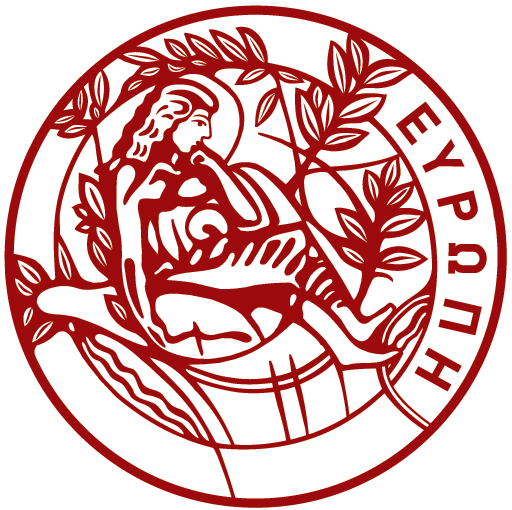Active Learning
September 23, 2023 2023-09-23 11:38Active Learning
by Kallia Katsampoxaki-Hodgetts
Coordinator of Teaching and Learning Centre ‘TotT’, University of Crete
Image By Dylan Gillis | Unsplash (2022)
Active learning” is a pedagogical approach with numerous strategies in higher education but no universal agreement on its definition. Based on early definitions (Chickering and Gamson, 1987 ; Bonwell and Eison, 1991), Jacob (2023) defines it as intentional Active Cognitive Activities/Tasks (ACTs) coupled with strategies embedded in well established theoretical models such as:
- Bloom’s taxonomy (Anderson et al., 2001)
- the Online Engagement Framework for Higher Education (Redmond et al., 2018)
- the ABC lesson plan (ABC LD) (Young and Perović, 2020)
- the ICAP model for active learning (Chi and Wylie, 2014)
Other education researchers associate ‘Active Learning’ with the Universal Design for Learning (UDL) theoretical framework (Rogers and Gronseth, 2021) and differentiated teaching and learning (Chi and Wylie, 2014) without implying that ‘active learning’ is limited to these models.
Active learning techniques combine both individual and collaborative strategies. Active Learning’ refers to anything that students do in a classroom other than just passively listening to the lecturer talk. This includes everything from listening practices that help students absorb what they hear, to articulation practices (e.g. discussions with fellow students), short reflective writing exercises in which students critically analyze the lecture material, problem solving or complex group exercises such as Jigsaw and Team-based Learning. ‘Collaborative learning’ is synonymous with active learning and covers other learning activities that students perform in groups of three or more (rather than alone or in pairs).
Another important aspect of active learning is that activities between teacher and students are carried out on the premise that “Students act as Equal Partners” as they all work together in planning tasks, selecting texts and presenting new material to the class.
Popular active learning techniques
Individual Reflective Writing assignments e.g. The “One Minute Paper”. In these short papers, students evaluate themselves, critically reflect on the new content, explain how important it is to them or compare different aspects.
Reflective discussions in pairs, e.g. Think-Pair Share. With this short activity, instructors provide ‘articulation’ opportunities to all students and opportunities to foster cognitive (evaluation, comparison, analysis, application) and metacognitive skills.
Other useful practices include using daily journals (presented as a portfolio at the end of the semester), completing comprehension quizzes, creating concept maps ( concept maps) or Socratic discussion method.
Group work ‘Jigsaw’ projects
In these group tasks, each member of a group is asked to complete a discrete part of a task. When each member has completed their assigned task, the students are then rearranged into new discussion/analysis groups where the ‘pieces’ can be put together to form the ‘Bigger picture’ regarding a topic/issue/problem. For example, in a chemistry course, each group of students researches a different form of energy production (nuclear, fossil fuel, hydroelectric, etc.). The groups are then rearranged so that each group has an expert in one form of energy production. Students then re-examine thoroughly how much emphasis should be placed on each method (Paulson, and Faust, 2022).
Two-stage or three-stage exams and/or Team based learning
In a two-stage exam, students write an exam paper individually during the first stage. In the next stage, they work on the same paper in a group of four or five students, which acts as an active support network among students that provides feedback and clarifies potential misconceptions. Through discussion and collaboration, students’ critical reflections contribute towards their own re-alignment with academic expectations set by the instructor, and increase understanding and better retention of content and concepts over time. This is a collaborative testing model that fosters immediate peer-scaffolding, and higher retention rates (Vogler & Robinson, 2016).
Summative exams (i.e. final exams at the end of the semester) may motivate some students but are not an inclusive practice as it does not integrate awareness-raising feedback or self-regulation opportunities on behalf of the student prior to the final exam. Two stage exams (Gilley & Clarkston, 2014) foster students’ cognitive and metacognitive skills, they make them aware of their own strengths and weaknesses in relation to the new input and encourage them to self-regulate so as to succeed.
References
Anderson, L. W., Krathwohl, D. R., Airasian, P. W., Cruikshank, K. A., Mayer, R. E., Pintrich, P. R., Raths, J. D., and Bloom, B. S. (2001). A taxonomy for learning, teaching, and assessing: A revision of Bloom’s Taxonomy of educational objectives, New York: Addison-Wesley.
Bloom, B. S. (1956) Taxonomy of educational objectives: the classification of educational goals, New York: David McKay Co.
Bonwell, C. C. and Eison, J. A. (1991). Active learning: Creating excitement in the classroom, Washington, DC: School of Education and Human Development, George Washington University.
Chickering, A. W. and Gamson, Z. F. (1987). ‘Seven principles for good practice in undergraduate education,’ AAHE Bulletin, pp. 3–7.
Chi, M.T. & Wylie, R. (2014). The ICAP Framework: Linking Cognitive Engagement to Active Learning Outcomes, Educational Psychologist, 49:4, 219-243, DOI: 10.1080/00461520.2014.965823
Jacob, M. (2023) Active cognitive tasks – Synthesising frameworks for active
learning online. In (Eds) Wendy Garnham and Isobel Gowers. Active learning in Higher Education, London: Routledge.
Paulson, D.R. and Faust J.L. ( nd) Active Learning For The College Classroom In https://www.calstatela.edu/dept/chem/chem2/Active/main.htm [22/05/2022].
Redmond, P., Abawi, L., Brown, A., Henderson, R., & Heffernan, A. (2018). An online engagement framework for higher education. Online learning, 22(1), 183-204.
Rogers, S. & Gronseth, S. L. (2021). Applying UDL to Online Active Learning: Instructional Designer Perceptions. The Journal of Applied Instructional Design, 10(1). https://dx.doi.org/10.51869/101/srsg
Young, C. and Perović, N. (2020) ABC Learning Design Toolkit.



